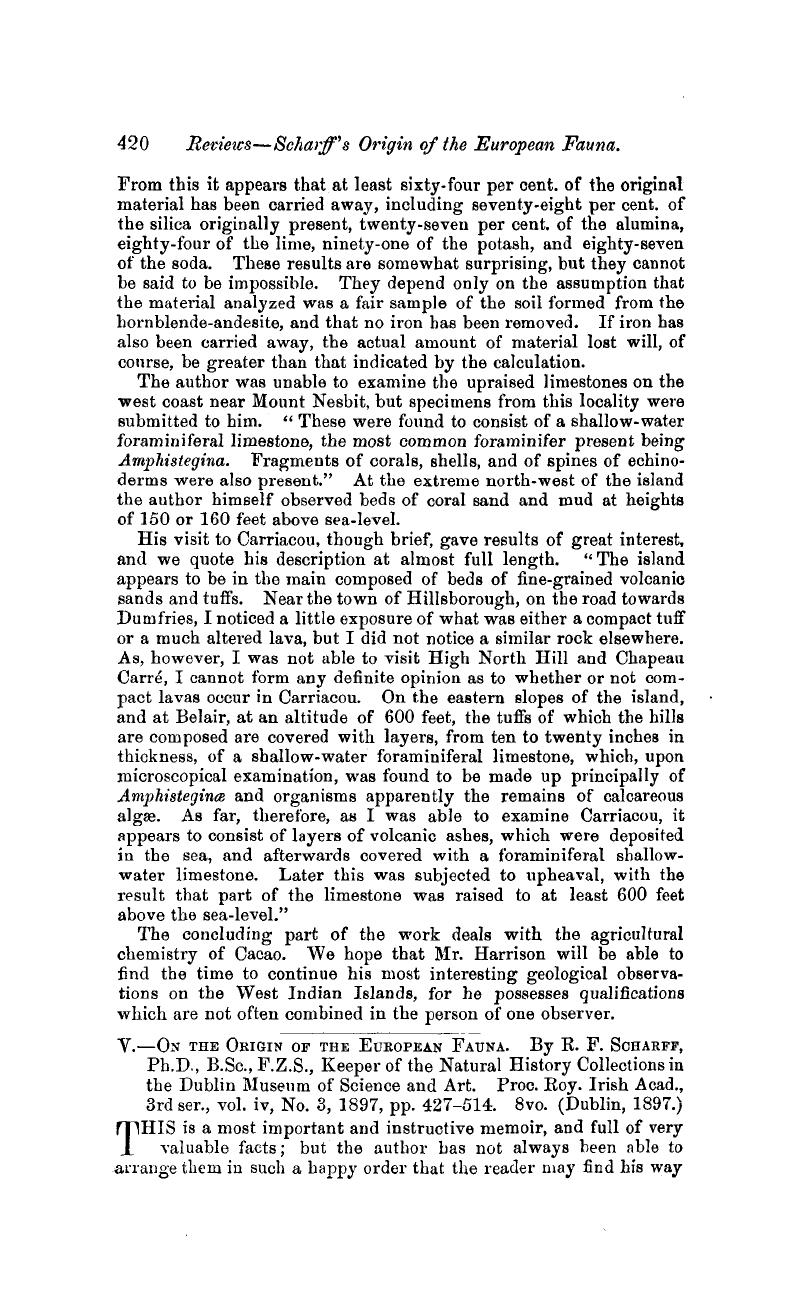No CrossRef data available.
Article contents
V.—On the Origin of the Eukopean Fauna. By R. F. Scharff, Ph.D., B.Sc, F.Z.S., Keeper of the Natural History Collections in the Dublin Museum of Science and Art. Proc. Roy. Irish Acad., 3rd ser., vol. iv, No. 3, 1897, pp. 427–514. 8vo. (Dublin, 1897.)
Published online by Cambridge University Press: 01 May 2009
Abstract

- Type
- Reviews
- Information
- Copyright
- Copyright © Cambridge University Press 1897
References
page 422 note 1 Among the Irish plants we have some species, such as Spiranthes Romanzoviana, Erioeaulon septangulare, and Sisyrhynchium angustifolium, which appear to belong to the same division.
page 422 note 2 “The Connection between the Distribution of the existing Fauna and Flora of the British Isles with the Geological Changes which have affected their area”: Mem. Geol. Surv., vol. i, 1846.Google Scholar
page 423 note 1 The following Irish plants may be mentioned: Arbutus unedo, Euphorbia Miberna, Simethis bicolor, and Sibthorpia Europea.
page 423 note 2 Cotyledon umbilicus, and other plants, probably belong to this type.
page 426 note 1 Myogale moschata should be removed from this list; it belongs to South-Eastern Eussia (see remarks on p. 421, ante).
page 426 note 2 “Geographische Verbeitung d. Säugethiere in dem Tschernosem Gebeite,” etc. 1891.


